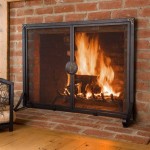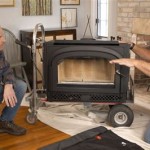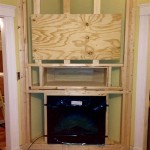Gas Fireplace Vent Covers: Functionality, Safety, and Aesthetics
Gas fireplaces offer a convenient and aesthetically pleasing alternative to traditional wood-burning fireplaces. A critical component of gas fireplace systems often overlooked is the vent cover. This seemingly simple device plays a vital role in ensuring the safe and efficient operation of the fireplace while also offering design flexibility. Understanding the function, types, and selection criteria for gas fireplace vent covers is essential for homeowners and professionals involved in fireplace installation and maintenance.
Understanding the Purpose of Gas Fireplace Vent Covers
Gas fireplace vent covers serve multiple crucial functions. Primarily, they act as a safety barrier, preventing objects, debris, and small animals from entering the vent system. Obstructions in the vent can lead to dangerous carbon monoxide buildup within the home and impede the proper exhaust of combustion byproducts. A properly installed and maintained vent cover reduces the risk of these hazards. The vent cover also serves to protect the venting system itself from damage caused by weather elements like rain, snow, and ice. Water ingress can corrode the vent pipes and components, leading to reduced efficiency and potential failures. Furthermore, the vent cover contributes to the overall aesthetic appeal of the fireplace system, allowing for a more integrated and visually pleasing installation.
The efficient removal of exhaust gases is paramount to the safe operation of a gas fireplace. Incomplete combustion of natural gas or propane can produce carbon monoxide, a colorless, odorless, and potentially lethal gas. The vent system is designed to channel these byproducts safely out of the home. A blocked or damaged vent system compromises this safety mechanism. The vent cover, therefore, acts as the first line of defense in preventing blockages and maintaining proper airflow. It also prevents downdrafts, which can push exhaust gases back into the living space.
The regulatory landscape surrounding gas fireplace installation and operation varies depending on location. Local building codes and manufacturer guidelines often dictate specific requirements for venting systems, including the type and placement of vent covers. Adherence to these regulations is crucial for ensuring the safety and legality of the installation. Failure to comply with these standards can result in fines, mandatory repairs, and potential safety hazards. Therefore, consulting with qualified professionals and thoroughly researching local regulations are essential steps in any gas fireplace project.
Beyond the immediate safety concerns, a compromised vent system can also lead to long-term operational problems. Reduced airflow can strain the fireplace's components, leading to premature wear and tear. A corroded or damaged vent system may require costly repairs or replacements. Regular inspection and maintenance of the vent cover and the entire venting system are essential preventative measures. This includes checking for signs of damage, such as rust, cracks, or blockages, and promptly addressing any issues that are identified.
Types of Gas Fireplace Vent Covers
Gas fireplace vent covers are available in a variety of materials, designs, and configurations to suit different fireplace models and installation requirements. The selection of an appropriate vent cover should consider the specific type of venting system, the aesthetic preferences of the homeowner, and the local environmental conditions. Each type offers different advantages and disadvantages in terms of durability, cost, and visual appeal.
Metal Vent Covers: Metal vent covers are widely used due to their durability and resistance to corrosion. They are typically constructed from galvanized steel, stainless steel, or aluminum. Galvanized steel offers a balance of affordability and corrosion resistance, but it may eventually rust over time, particularly in humid climates. Stainless steel provides superior corrosion resistance and is a popular choice for coastal areas or regions with high levels of pollution. Aluminum is lightweight and corrosion-resistant but may be more susceptible to dents and damage from impacts. Metal vent covers are available in various styles, including square, rectangular, and round shapes. Some models feature integrated spark arrestors to prevent embers from escaping the vent system.
Plastic Vent Covers: Plastic vent covers are a lightweight and cost-effective option. They are typically made from high-density polyethylene (HDPE) or other durable plastics. Plastic vent covers are resistant to corrosion and are available in a variety of colors and styles. However, they may be less durable than metal vent covers and may be more susceptible to damage from extreme temperatures or UV exposure. Plastic vent covers are often used in applications where aesthetics are less critical or where the cost is a primary concern.
Decorative Vent Covers: Decorative vent covers are designed to enhance the visual appeal of the fireplace system. They are available in a wide range of styles, from simple and understated designs to ornate and elaborate patterns. Decorative vent covers may be made from metal, plastic, or a combination of materials. They often feature intricate designs, such as floral patterns, geometric shapes, or custom motifs. The choice of a decorative vent cover should complement the overall style of the home and the surrounding landscape. These covers, while aesthetically pleasing, must still meet the functional requirements of preventing debris and animal intrusion and ensuring proper ventilation.
Direct Vent Covers: Direct vent fireplaces utilize a sealed combustion system that draws air from outside the home and vents exhaust gases directly outdoors. Direct vent covers are specifically designed for these systems and typically feature two concentric pipes: one for intake air and one for exhaust. These covers are essential for maintaining the integrity of the sealed combustion system and preventing the entry of debris or moisture. Direct vent covers are typically made from metal and are available in a variety of styles to match the fireplace design.
B-Vent Covers: B-vent fireplaces rely on natural draft to exhaust combustion gases. These systems require a vertical vent pipe that extends above the roofline. B-vent covers are typically designed to prevent rain, snow, and debris from entering the vent pipe. They may feature a conical or domed shape to deflect precipitation and a mesh screen to keep out animals and large objects. B-vent covers are typically made from metal and are available in a range of sizes to fit different vent pipe diameters.
Choosing the Right Gas Fireplace Vent Cover
Selecting the appropriate gas fireplace vent cover involves considering several factors, including the type of fireplace, the vent system configuration, the local climate, and aesthetic preferences. A careful assessment of these factors will ensure that the chosen vent cover provides adequate protection, proper ventilation, and a visually appealing finish. Improper selection can lead to safety hazards, operational problems, and aesthetic dissatisfaction.
Compatibility with Fireplace and Vent System: The first and most crucial step is to ensure that the vent cover is compatible with the specific type of gas fireplace and vent system. Direct vent fireplaces require specialized vent covers designed for sealed combustion systems. B-vent fireplaces need covers suitable for natural draft venting. The vent cover should also be sized appropriately to fit the vent pipe diameter or opening. Consulting the fireplace manufacturer's recommendations and local building codes is essential to ensure compatibility and compliance.
Material Durability and Corrosion Resistance: The choice of material significantly impacts the vent cover's durability and resistance to corrosion. In coastal areas or regions with harsh weather conditions, stainless steel or other corrosion-resistant materials are highly recommended. Galvanized steel offers a more affordable option but may require more frequent maintenance or replacement. Plastic vent covers are suitable for less demanding environments but may not withstand extreme temperatures or UV exposure.
Mesh Size and Animal Protection: The mesh size of the vent cover is critical for preventing the entry of small animals, insects, and debris. A fine mesh screen provides better protection but may also restrict airflow if it becomes clogged with dirt or leaves. Regular cleaning and maintenance are essential to ensure that the mesh screen remains unobstructed. The design should prevent animals from easily dislodging or damaging the cover.
Aesthetic Considerations: While functionality is paramount, the aesthetic appeal of the vent cover should also be considered. The vent cover should complement the overall style of the home and the fireplace. A wide range of styles, colors, and finishes are available to match different architectural designs. Decorative vent covers can add a touch of elegance or personality to the fireplace system. However, it is crucial to ensure that decorative elements do not compromise the vent cover's functionality or safety.
Ease of Installation and Maintenance: The vent cover should be easy to install and maintain. A simple installation process reduces the risk of errors and ensures a secure fit. Regular maintenance, such as cleaning and inspection, should be straightforward. Vent covers that require specialized tools or expertise for installation or maintenance may be less desirable.
Compliance with Local Codes and Regulations: Local building codes and regulations often dictate specific requirements for gas fireplace venting systems, including the type and placement of vent covers. It is essential to research and comply with these regulations to ensure the safety and legality of the installation. Consulting with a qualified professional or local building inspector can help ensure compliance.
Professional Installation: While many vent covers are designed for relatively easy installation, hiring a qualified professional is often recommended, particularly for complex venting systems or when dealing with gas appliances. A professional can ensure that the vent cover is installed correctly and securely, minimizing the risk of errors or safety hazards.

Termination Cap Cover For Direct Vent Fireplace Draft Stopper

Termination Cap Cover For Direct Vent Fireplace Draft Stopper

Fireplace Cover To Keep Cold Air Out

Pin On Diy Home

Pin On Fireplace

Vented Vs B Vent Direct Free Dixie S

Termination Cap Cover For Direct Vent Fireplace Draft Stopper

Dv Gas Propane Fireplace Venting Friendly Fires

Considering A Ventless Gas Fireplace Here S What You Need To Know Bob Vila

Myg Magnetic Fireplace Draft Stopper Cover To Block Cold Air From Vent Prevent Heat Loss Magnet Screen Indoor Chimney Blocker Covers 36 X 6
Related Posts








